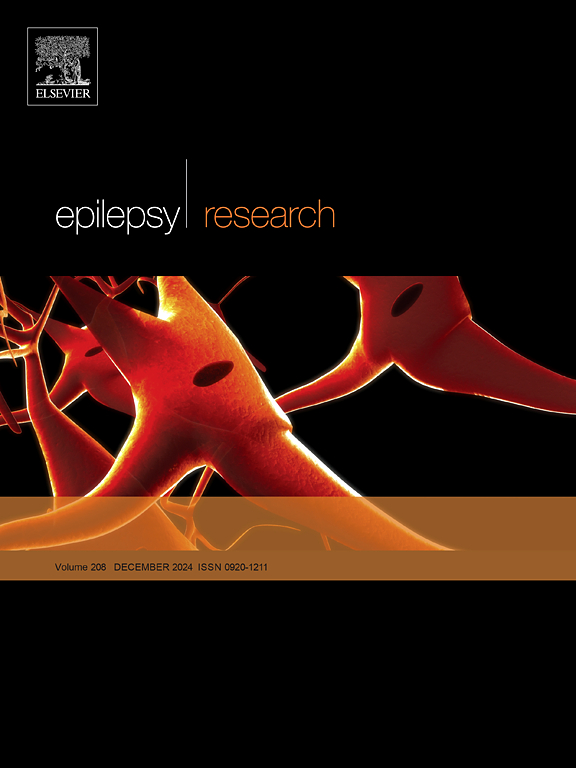From abnormal fetal movements to neonatal seizures: A literature review
IF 2
4区 医学
Q3 CLINICAL NEUROLOGY
引用次数: 0
Abstract
Fetal seizures (FS) are underestimated and underdiagnosed events with a poor prognosis that could precede neonatal seizures. FS diagnosis could be clinical or by means of ultrasound. FS causes are heterogenic. After a PubMed, Google Scholar and SCOPUS research, aimed to find publications concerning FS, we selected 23 studies, mainly case reports with literature reviews, for a total of 29 patients. We evaluated the method of diagnosis, gestational age at diagnosis of FS, FS etiology, time of etiological diagnosis, fetal/neonatal outcome and possible therapeutic options. Fetal seizures were mainly felt by the mother (20/29 cases, 69 %) or diagnosed by fetal ultrasound (17/29 cases, 58.6 %). When seizures were felt by the mother, the gestational age of the fetal seizures was comprised from 20 to 40 week (average 31.3 weeks); the range of weeks when fetal seizures were detected by ultrasound ranged from 13 to 41 weeks (average 29.3 weeks). Among the etiologies, the most frequent were Pyridoxine dependent epilepsy and arthrogryposis multiplex congenita (4/29 each, 13.8 %), followed by fatal infantile olive-ponto-cerebellar hypoplasia 3/29, 10.3 %). The outcome of the most of patients was severe, with neonatal death occurring in 12/29 (41.4 %), therapeutic abortion in 5/28 (17.2 %); death occurred later in infancy in 3/29 (10.3 %), while 8/29 (31 %) presented psychomotor delay. FS may be a prenatal sign of fetal neurological impairment. Their knowledge is crucial because an early diagnosis allow an appropriate management of pregnancy, and an early anti-convulsant treatment after birth. However, in the reported cases, the prognosis was frequently poor.
从异常胎动到新生儿癫痫:文献综述
胎儿癫痫(FS)被低估和诊断不足的事件与预后差,可能先于新生儿癫痫发作。FS可通过临床或超声诊断。FS的病因是异质性的。在PubMed、谷歌Scholar和SCOPUS检索了关于FS的出版物后,我们选择了23项研究,主要是病例报告和文献综述,共29例患者。我们评估了诊断方法,FS诊断时的胎龄,FS病因,病因诊断时间,胎儿/新生儿结局和可能的治疗方案。胎儿癫痫发作主要由母亲感觉(20/29例,69 %)或通过胎儿超声诊断(17/29例,58.6 %)。当母亲感觉到癫痫发作时,胎儿癫痫发作的胎龄为20至40周(平均31.3周);超声检测胎儿癫痫发作的周数范围为13 ~ 41周(平均29.3周)。病因中以吡哆醇依赖性癫痫和先天性多重关节挛缩最为常见(4/29,13.8 %),其次是致死性婴儿橄榄桥-小脑发育不全3/29,10.3 %)。大多数患者的结局是严重的,新生儿死亡发生在12/29(41.4% %),治疗性流产发生在5/28(17.2% %);3/29(10.3 %)患儿死亡时间较晚,8/29(31 %)患儿精神运动迟缓。FS可能是胎儿神经损伤的产前体征。他们的知识是至关重要的,因为早期诊断可以对妊娠进行适当的管理,并在出生后进行早期抗惊厥治疗。然而,在报告的病例中,预后往往很差。
本文章由计算机程序翻译,如有差异,请以英文原文为准。
求助全文
约1分钟内获得全文
求助全文
来源期刊

Epilepsy Research
医学-临床神经学
CiteScore
0.10
自引率
4.50%
发文量
143
审稿时长
62 days
期刊介绍:
Epilepsy Research provides for publication of high quality articles in both basic and clinical epilepsy research, with a special emphasis on translational research that ultimately relates to epilepsy as a human condition. The journal is intended to provide a forum for reporting the best and most rigorous epilepsy research from all disciplines ranging from biophysics and molecular biology to epidemiological and psychosocial research. As such the journal will publish original papers relevant to epilepsy from any scientific discipline and also studies of a multidisciplinary nature. Clinical and experimental research papers adopting fresh conceptual approaches to the study of epilepsy and its treatment are encouraged. The overriding criteria for publication are novelty, significant clinical or experimental relevance, and interest to a multidisciplinary audience in the broad arena of epilepsy. Review articles focused on any topic of epilepsy research will also be considered, but only if they present an exceptionally clear synthesis of current knowledge and future directions of a research area, based on a critical assessment of the available data or on hypotheses that are likely to stimulate more critical thinking and further advances in an area of epilepsy research.
 求助内容:
求助内容: 应助结果提醒方式:
应助结果提醒方式:


